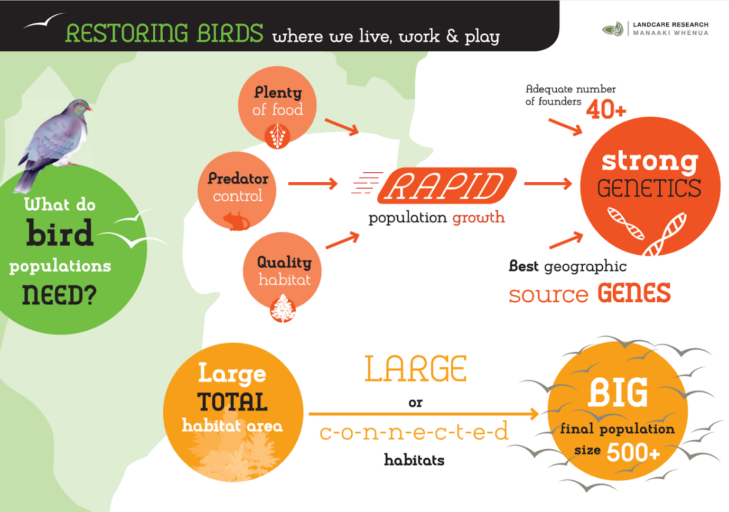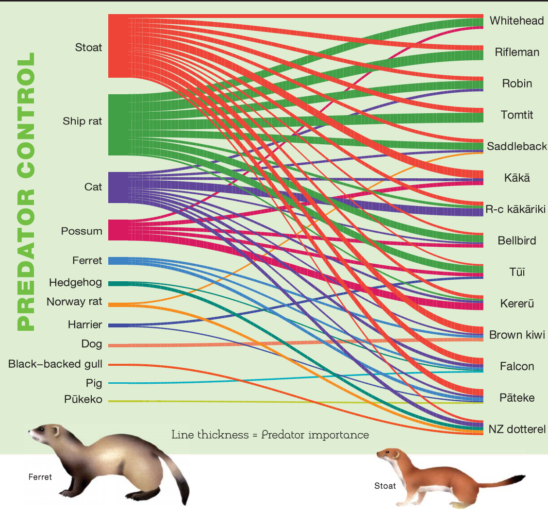The interaction between habitat restoration and predator control is a topic of great interest to us at Predator Free NZ Trust. In 2017 Manaaki Whenua Landcare Research created a series of info-graphics that looked at just that. Focusing on the Cape to City Project, they asked what do bird populations need to thrive?

They identified three crucial elements that enable population growth:
- Plenty of food
- Predator control
- Quality habitat
When these three factors come together significant population growth becomes more than just a hypothetical possibility.
The habitat area available needs to be large, but not necessarily one big patch. Some birds, like kākā and kererū, are happy flapping between patches of bush. In contrast, other species, like tīeke and toutouwai/robin, won’t venture more than 100 metres out of the forest undergrowth when looking for new territory.

This means that habitat restoration isn’t just about planting more trees everywhere, though that helps, but thinking about which species are being targeted and finding out what they need. For the Cape to City Project, the different needs of species were broken down.
“Plant for connectivity” means thinking about where you are planting. The goal of this is to reduce the gaps between suitable habitat for distance shy birds such as rifleman. “Plant for food” means thinking about what you are planting, so to increase food sources for birds like Tūī. DOC have some suggestions for what native birds like.
Of course, predator control is still crucial and Manaaki Whenua broke down which predators are targeting which bird species. You can see that stoats and ship rats are un-fussy eaters, as a result almost all the identified native birds are preyed on by one of them. On the other hand, other predators have more specific impacts, pigs are a threat to falcons and harrier are known to harass tūī and pāteke.
By thinking about how predator control and habitat creation interact we get closer to the dream of having native species thrive where we live, work and play!
Thank you to Manaaki Whenua for sharing their work with us. Credit to John Innes (Manaaki Whenua), Neil Fitzgerald (Manaaki Whenua), Nicolette Faville (Manaaki Whenua), Morgan Rothwell (Kakariki Games) and Derek Orley (The Field Guide to the Birds of New Zealand).

